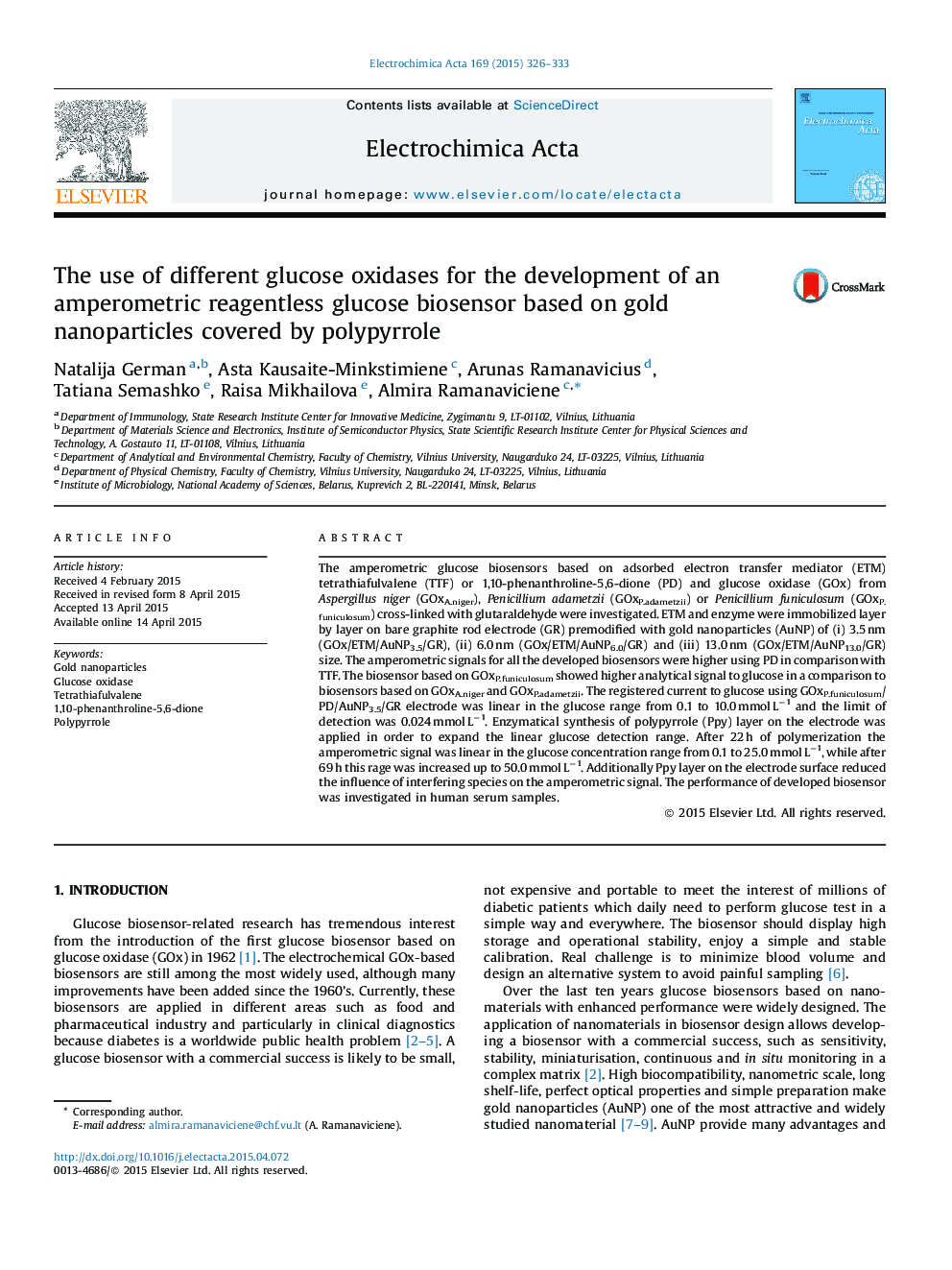| Article ID | Journal | Published Year | Pages | File Type |
|---|---|---|---|---|
| 184127 | Electrochimica Acta | 2015 | 8 Pages |
ABSTRACTThe amperometric glucose biosensors based on adsorbed electron transfer mediator (ETM) tetrathiafulvalene (TTF) or 1,10-phenanthroline-5,6-dione (PD) and glucose oxidase (GOx) from Aspergillus niger (GOxA.niger), Penicillium adametzii (GOxP.adametzii) or Penicillium funiculosum (GOxP.funiculosum) cross-linked with glutaraldehyde were investigated. ETM and enzyme were immobilized layer by layer on bare graphite rod electrode (GR) premodified with gold nanoparticles (AuNP) of (i) 3.5 nm (GOx/ETM/AuNP3.5/GR), (ii) 6.0 nm (GOx/ETM/AuNP6.0/GR) and (iii) 13.0 nm (GOx/ETM/AuNP13.0/GR) size. The amperometric signals for all the developed biosensors were higher using PD in comparison with TTF. The biosensor based on GOxP.funiculosum showed higher analytical signal to glucose in a comparison to biosensors based on GOxA.niger and GOxP.adametzii. The registered current to glucose using GOxP.funiculosum/PD/AuNP3.5/GR electrode was linear in the glucose range from 0.1 to 10.0 mmol L−1 and the limit of detection was 0.024 mmol L−1. Enzymatical synthesis of polypyrrole (Ppy) layer on the electrode was applied in order to expand the linear glucose detection range. After 22 h of polymerization the amperometric signal was linear in the glucose concentration range from 0.1 to 25.0 mmol L−1, while after 69 h this rage was increased up to 50.0 mmol L−1. Additionally Ppy layer on the electrode surface reduced the influence of interfering species on the amperometric signal. The performance of developed biosensor was investigated in human serum samples.
Graphical abstractFigure optionsDownload full-size imageDownload as PowerPoint slide
